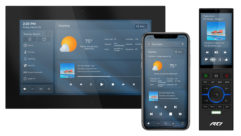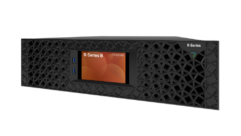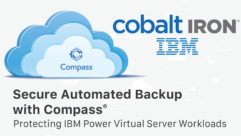
Coming Home to Windows Home Server, Part 11
Oct 3, 2008 12:00 PM,
By Eric B. Rux
Read More:
Coming Home to Windows Home Server Series

Windows Home Server Roundup
I’ve been writing about my experiences with Windows Home Server for over a year now, and I’m still amazed by how well this new platform has taken off. With the exception of the “corruption problem” (which really only plagued a few users), it has been smooth sailing. If you read last month’s column, you know that WHS has even saved me from catastrophe. Simply put, WHS is a terrific product.
This month, I want to take a step back and provide an overview of some of the WHS buzz that I’ve been tracking (e.g., on blogs, with the WHS Team, with friends). None of these topics is yet ready for a full-blown column, but they’re interesting enough for brief commentary. Here goes …
Backing Up Small Businesses
When I met with the WHS Team in Redmond, Wash. this summer, we had an interesting discussion about WHS’s many “non-home” uses. The product’s automated PC backup functionality and remote-access capability would be perfect for small businesses that have 10 or fewer computers. Although WHS isn’t necessarily intended for the small business, you’re free to give it a try as long as you stay within the License Agreement. (For example, don’t try to hack WHS to accept more than 10 machines.) The official WHS Blog even has a picture of a WHS system sitting next to a Small Business Server (SBS) machine! The WHS system backs up the PCs, and the SBS system services the company. I hope to dive into this area further in the near future.
Home Automation
Another interesting discussion I had in Redmond was about home automation. A couple companies such as Embedded Automation have integrated their home-automation offerings into WHS. These products let you set your air conditioning, heat, lights, and appliances on a specific schedule, or even manage them remotely. WHS and home automation are a perfect fit, and I hope to review some of these products soon.
Stay-At-Home Server: Funny Books and Videos
On the lighter side, it appears that the WHS team is a lively bunch, not afraid of poking fun at themselves. As an example, take a look at the Stay-At-Home Server web site. The team’s first book, Mommy, Why Is There a Server in the House?, is simply brilliant. You don’t have to buy the book; just click the link. There’s even a new book: Server Feng Shui. If you like your WHS system, you’ll enjoy these books and videos. Remember: “Never place things on the server; this angers Chi.”
Guides for WHS
There’s a wealth of information about WHS on the Internet. Heck, even Microsoft has some helpful documents. Check out the company’s Updated Technical Briefs for Windows Home Server. You can find guides from the WHS Team about how to configure user accounts and work network shares, PC backups, media sharing, and even simple home networking. These documents are moderately technical and even provide step-by-step instructions for performing basic WHS tasks. Even if you think you’re a WHS expert, take a few minutes to read through these technical briefs—you might just learn something. (I did.)
WHS Books
If you want more than just the basics, check out this list of WHS books that the We Got Served website came up with. To be honest, I haven’t read any of these books, so I can’t comment on the quality of the books. If you’ve read any of them, drop me a line and let me know what you thought.
YourName.HomeServer.com is Free
I briefly mentioned this in Coming Home to Windows Home Server, Part 7, but it’s worth mentioning again: Thanks to Microsoft, you can have your very own WHS address … for free. This is important for a number of reasons. First, it’s free (and free is always good, right?). Second, it’s dynamic. Although most businesses will have one or more static (never changing) Internet IP addresses, home users seldom need or want to pay for a static address. Therefore, the address that uniquely identifies you on the Internet sometimes changes. Microsoft designed WHS and its “HomeServer.com” domain to work together to ensure that YourName.HomeServer.com is always pointing to your WHS system. Simply type “https://YourName.HomeServer.com” into IE from anywhere in the world, and you’ll have instant access to your WHS system and your home PCs.
How About You?
One question posted to the WHS Team was, “Why can’t I connect more than 10 users/computers to my WHS system?” Check out the link, then ask yourself, “Would I be interested in a version of WHS that allowed more than 10 users (and perhaps other, more advanced features)?” Let me know how you plan to use your WHS system, and I’ll be sure to pass on your comments to the WHS Team.
What’s Next?
I love to hear from my readers, so keep those comments coming! If you would like me to discuss a specific WHS topic, let me know. If you have a problem, let me know that, too, and we’ll figure it out together. Until next month, have fun with your WHS implementation!
<< Coming Home to Windows Home Server, Part 10 | Coming Home to Windows Home Server, Part 12 >>










